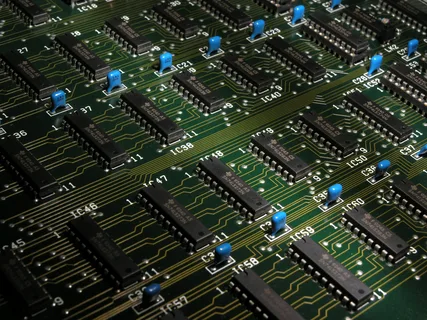Integrated circuits (ICs) are the building blocks of modern electronic devices. From smartphones and computers to medical equipment and home appliances, integrated circuits power the technology we rely on every day. In this article, we’ll explore what integrated circuits are, how they work, their types, and why they are essential in today’s digital age.
What is an Integrated Circuit?
An integrated circuit is a small chip made of semiconductor material, usually silicon, that contains thousands to millions of miniature electronic components such as transistors, resistors, and capacitors. These components are interconnected to perform a wide range of functions like amplification, signal processing, data storage, and more.
Before the invention of integrated circuits, electronic devices were built using individual components connected by wires. This made devices bulky, costly, and less reliable. The invention of the integrated circuit in the late 1950s revolutionized electronics, allowing manufacturers to create compact, efficient, and more powerful gadgets.
How Does an Integrated Circuit Work?
An integrated circuit works by combining multiple electronic components into a single unit. These components are fabricated on a tiny piece of semiconductor material through a complex process known as photolithography.
When electricity flows through an integrated circuit, the transistors inside act as switches or amplifiers to control the movement of electrical signals. The design of the IC determines how the signals are processed and what output is generated.
The integration of components onto a single chip reduces power consumption, increases speed, and enhances reliability—key reasons why integrated circuits are preferred in modern electronics.
Types of Integrated Circuits
Integrated circuits come in various types, depending on their application and functionality. The main categories include:
1. Analog Integrated Circuits
These ICs deal with continuous signals. They are commonly used in audio amplifiers, radio-frequency systems, and voltage regulators. Analog ICs are crucial for processing real-world signals like sound and light.
2. Digital Integrated Circuits
Digital ICs process binary data—signals that are either on or off (1 or 0). These circuits are the backbone of digital devices such as microprocessors, memory chips, and logic gates.
3. Mixed-Signal Integrated Circuits
As the name suggests, these ICs combine analog and digital functions on a single chip. They are widely used in communication systems, where both signal types are needed to ensure efficient data transmission.
Applications of Integrated Circuits
Integrated circuits are found in almost every electronic device today. Here are some key applications:
- Consumer Electronics: Smartphones, televisions, laptops, and gaming consoles all rely on integrated circuits to function.
- Automotive Industry: ICs control everything from engine performance to infotainment systems and safety features like airbags and ABS.
- Healthcare: Medical devices such as pacemakers, diagnostic machines, and monitoring systems use integrated circuits for accurate operation.
- Industrial Automation: Integrated circuits are used in robotics, sensors, and control systems that improve manufacturing efficiency.
Advantages of Integrated Circuits
There are several benefits of using integrated circuits, including:
- Miniaturization: ICs allow for the creation of compact devices.
- Cost-Effective: Mass production reduces the cost per unit significantly.
- Energy Efficiency: They consume less power than traditional circuits.
- High Reliability: Fewer connections mean fewer chances of failure.
- High Speed: ICs offer faster signal processing and performance.
The Future of Integrated Circuits
As technology evolves, integrated circuits continue to become more powerful and efficient. Innovations like System-on-Chip (SoC) and 3D ICs are pushing the boundaries of what’s possible, enabling smarter and more connected devices.
The rise of artificial intelligence, Internet of Things (IoT), and 5G technology is further driving the demand for advanced integrated circuits. In the near future, we can expect even smaller, faster, and more energy-efficient ICs that will revolutionize industries and improve everyday life.
Conclusion
The integrated circuit is truly the heart of modern electronics. Its ability to pack enormous functionality into a tiny chip has transformed how we live, work, and communicate. As technology continues to advance, integrated circuits will remain at the forefront of innovation, powering the next generation of smart devices and systems.
Whether you’re a tech enthusiast or simply curious about how your gadgets work, understanding integrated circuits is key to appreciating the incredible engineering behind today’s digital world.




